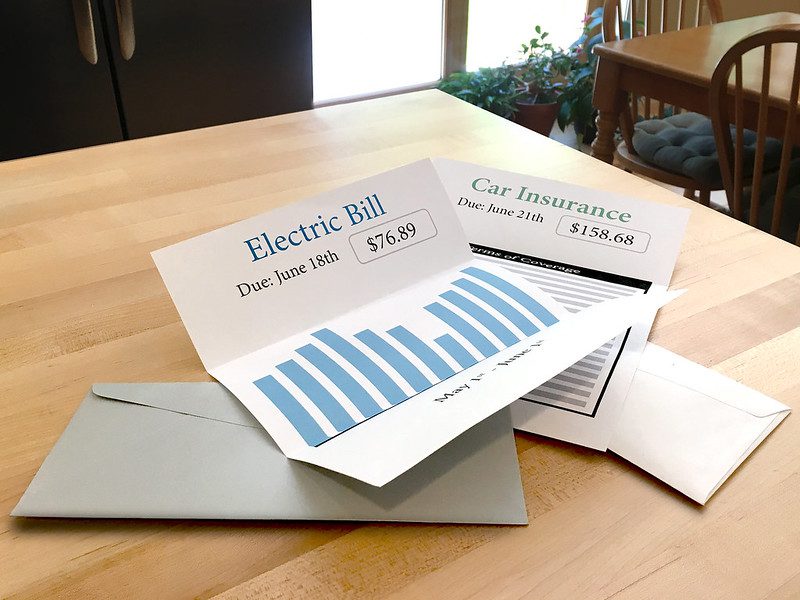

Your electric bill is one of the biggest guzzler of your monthly expenses. Fortunately electricity in North Dakota only costs about 9.6¢ per kilowatt hours (kWh), well below the national average of 13.1¢ per kWh. But we have higher heating demands in the winter, so the average North Dakotan spends about $1500 a year on electricity, making it a major household expense. The price of electricity in the last year has risen almost 5% and is sure to go up even more in the next year.
Here are some ways that you can save energy and reduce your electric bill.
Start with an audit
Most electric companies will be happy to send an expert to your house to see where you're using energy and how you can save. They'll run tests to see where you have air leaks siphoning off heat from the house. They'll look at the insulation and check appliances to see how much electricity they are using. They can give you recommendations on how to correct problems and whittle down your electric bill.
You don't have to have a professional do this. You can probably find most of the problems yourself. The links below show you how to do your own audit and calculate your energy use. Energy savings start with knowing where your energy is going, and an energy audit is the single most important first step to saving on energy costs.
The best time to do an energy audit is now, while the weather is warm. It will give you time to do improvements before the cold weather and the high demands of heating set in.
Seal and insulate
Heating is the single biggest expense, especially here in North Dakota. Make sure your home is well insulated and check for drafts or seams near windows and doors. Hold an extinguished match around your windows, doors and electric outlets. If there's a draft, it will suck the smoke from the match towards the window. Or you can purchase an electronic draft detector for $25-$50.
Stop hot air from escaping your house this winter by caulking any cracks that you find. Install gaskets on your electric outlets. Put weather stripping or a foam gasket around your doors.

The most effective insulation is in your attic. That is where most of the heat in your home is lost. If you have an older house, the insulation has probably settled or compressed over the years. According to the U.S. Environmental Protection Agency (EPA), attics should have a minimum of R-38 insulation, which is typically between 10 and 14 inches deep. Replacing or adding to current insulation could save you as much as 40% to 50% on your heating and cooling costs.
Save on heating and cooling
Turn your thermostat down. Dialing down your thermostat just 7° to 10° during winter months for eight hours a day can save you 10% on your electric bill. It's easy to do at night when everyone's asleep and underneath warm blankets.
If you typically spend most of your day in one or two rooms, keep the thermostat set low and use space heaters in your work areas. If you don't have a wall heater in the bathroom, use a space heater when taking a shower. Turn it on for ten minutes or so to get the bathroom nice and warm and turn it off before stepping into the shower. Between the heat of the shower and the retained heat from the space heater, you will step out into a nice warm room without the expense of heating the whole house.
You can keep the thermostat cooler during the day if everyone dresses for winter. In our house, there are no bare feet during winter. Everyone wears shoes or slippers. We pull out the long sleeved clothing and sweaters to wear during the day. In the evening, when we're relaxing or watching TV, we use a throw blanket to keep warm instead of turning up the heat.
The same thing applies to air conditioning. If you run your air conditioner 24 hours a day, it can cost as much $15 a day. Since air conditioning accounts for 12% of total household energy costs in most homes, you'll save a lot if you are careful about how and when the air conditioner is used.
Instead of setting the thermostat at 75°, set it three or four degrees higher, just enough so that you're comfortable. Draw the shades and close curtains to keep the sun from heating up the house. Turn it off in the evening when the temperatures have cooled. At night run a fan in the bedrooms so that everyone can sleep comfortably.
You've already heard this before, but it's true: a programmable thermostat is the best tool for lowering heating and cooling bills. There's no need to heat the house as much when no one's home or everyone is asleep. Get a thermostat to automatically adjust the temperature when it's needed. It can cost as little as $25 and will save you a lot.
Save on hot water
According to the EPA, 17% of the average home’s energy bill comes from the energy used to heat water. After lowering your home heating and cooling costs, you should look at your water heater.
Start by setting the water heater's thermostat between 120° to130°. Keeping your heater at 140° or more is not only needlessly wasteful, but it can also scald and cause injuries to young children who may not be aware of how hot the water coming out of the faucet is.
You can save more if you insulate the heater and any exposed pipes. Insulating the tank could save you up to 16% in water heating cost. Save even more when you put insulating foam tubes over exposed pipes. If you insulate the water heater, do not have the thermostat set higher than 130°, as this could cause the wiring to overheat.
This is just the start of many ways you can save on electric bills. I'll have more money-saving tips in future columns. But this is the best place to start. If you are careful about just these two areas—home heating and cooling and the water heater—you can net significant savings over time.
Do your own energy audit: Do-It-Yourself Home Energy Assessments | Department of Energy.
Calculate your appliance's energy use: Estimating Appliance and Home Electronic Energy Use | Department of Energy.